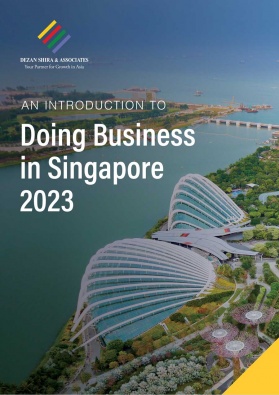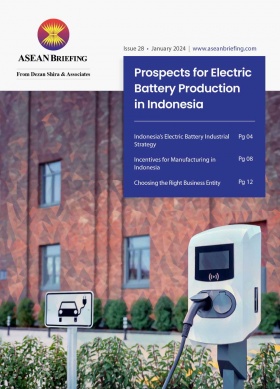Understanding Singapore’s 2024 GDP Forecast
In 2024, Singapore maintains a cautiously optimistic economic outlook despite global uncertainties, with projections indicating a modest growth range of 1 to 3 percent. Key sectors, including manufacturing and tourism, anticipate a measured rebound, driven by factors such as recovering semiconductor sales and enhanced global connectivity, reinforcing Singapore’s resilience amidst evolving economic dynamics.
Singapore has confirmed its economic growth projections for 2024, maintaining a cautiously optimistic outlook amidst global uncertainties. Despite the modest growth of 1.1 percent recorded in 2023, the Ministry of Trade and Industry (MTI) upheld its growth forecast range for 2024, set between 1 and 3 percent. This decision reflects the country’s resilience in an increasingly uncertain global environment.
The MTI highlights persistent risks in the global economy, including ongoing geopolitical tensions such as those in the Middle East, which can potentially disrupt global supply chains and trade, thereby affecting Singapore’s economy. Domestically, the forecast takes into account trends in regional economies and external demand, particularly in sectors like manufacturing and trade. Despite these challenges, Singapore foresees gradual growth, driven by factors like the rebounding semiconductor sales and recovering tourism demand.
Against this backdrop, the upcoming Budget 2024, scheduled for announcement on February 16, marks a pivotal moment for Singapore’s economic strategy. It is anticipated that the budget will prioritize adapting to challenges and capitalizing on opportunities to foster a stronger and more resilient Singapore in an unpredictable world. The government is expected to address key areas such as economic diversification, innovation, and sustainability, aiming to position Singapore for sustained growth and prosperity amidst evolving global dynamics.
Singapore’s economic performance in 2023
Singapore’s GDP growth in 2023 was predominantly driven by the expansion of various service sectors, as highlighted by MTI Permanent Secretary (Development) Dr. Beh Swan Gin during a media briefing. The other services, information and communications, and transportation and storage sectors played significant roles in driving growth.
However, the goods-producing industries, including manufacturing and construction, experienced a contraction of 2.9 percent. Within the manufacturing sector, there was a notable decline of 4.3 percent, reversing the growth trend observed in 2022. Except for transport engineering, all clusters within the manufacturing sector recorded output declines.
In contrast, the services-producing industries expanded by 2.3 percent in 2023, although at a slower pace compared to the 5.1 percent growth in 2022. The growth in services was primarily driven by other services, information and communications, and transportation and storage.
In the fourth quarter, most sectors experienced year-on-year growth, except for retail trade (-0.3 percent), F&B services (-1.5 percent), professional services (-0.7 percent), and administrative and support services (-1.7 percent). Despite the growth, downgrades were observed across all sectors compared to initial estimates.
The finance and insurance sector witnessed the sharpest growth in the fourth quarter, at 5.4 percent, accelerating from the previous quarter’s 2.5 percent. This growth was propelled by a surge in net fees and commissions, particularly in wealth management income.
Financial services growth is expected to be sustained, especially due to supportive base effects and anticipated improvements in credit demand as global central banks pause monetary tightening.
Moreover, the manufacturing sector rebounded in the fourth quarter after four consecutive quarters of decline, registering a 1.4 percent year-on-year growth. This turnaround was driven by output increases in the electronics, transport engineering, and chemicals clusters.
2024 outlook: sectoral analysis
The outlook for Singapore’s manufacturing and trade-related sectors in 2024 is optimistic, with a focus on potential shifts in economic dynamics. Following the contraction witnessed in 2023, there is anticipation for a measured rebound, driven by the recovery in global demand and the positive trajectory of key industries.
- Electronics: The electronics sector, which experienced a downturn in 2023, is poised for a potential resurgence in 2024. This revival is supported by the global rebound in semiconductor sales, both domestically and internationally.
- Precision engineering: Similarly, the precision engineering cluster within the manufacturing sector is expected to rebound, fueled by a stronger-than-expected recovery in semiconductor sales on both the global and domestic fronts.
- Wholesale trade: The machinery, equipment, and supplies segment within the wholesale trade sector is projected to benefit from heightened external demand for electronic components, telecommunications, and computers.
In addition, the Singapore Tourism Board (STB) foresees a continued recovery in the tourism sector throughout 2024, building on the strong rebound observed in the previous year. STB projects visitor arrivals to reach between 15 and 16 million, contributing US$26 to US$27.5 billion in tourism receipts. Despite not yet reaching pre-pandemic levels, tourist spending is expected to approach figures seen in 2019.
Key markets driving visitor arrivals and spending include Indonesia, China, Malaysia, Australia, South Korea, and the United States. The recovery of the tourism sector is driven by improved global flight connectivity and initiatives like the mutual 30-day visa-free travel between China and Singapore, which commenced on February 9, 2024. STB anticipates international flight capacity to expand, nearing pre-pandemic levels for key markets.
Moreover, events and conferences, which played a pivotal role in driving growth in 2023, are expected to continue contributing to Singapore’s tourism landscape in 2024. Significant gatherings such as the Singapore Airshow and the World Architecture Festival are slated for the year ahead, further boosting tourism prospects.
Webinar – Hong Kong vs. Singapore: A Comparison of Current Business Environments, Key Industries, and Regional Hub Potentia
Thursday, April 25, 2024 | 12:00 PM New York / 6:00 PM Brussels
Kyle Freeman, Partner at Dezan Shira & Associates, will compare and contrast Singapore and Hong Kong’s business climates, ease of doing business, key industries, risks, and potential as a regional hub.
Key takeaways
As Singapore embarks on 2024, its economic landscape balances between hope and uncertainty. The Monetary Authority of Singapore (MAS) emphasizes the pivotal role of external final demand in determining the sustainability of projected growth, adding an unpredictable factor to the equation. While sectoral growth rates aim to revert to pre-COVID trends, they remain contingent on evolving global economic dynamics.
Despite geopolitical tensions, analysts maintain cautious optimism, fueled by the expected growth recovery in 2024, reinforced by the Progressive Wage Model’s expansion and potential financial sector recovery. Singapore remains resilient in navigating global economic shifts, supported by strategic foresight and policy measures, fostering an attractive investment climate and assuring sustained economic growth.
About Us
ASEAN Briefing is produced by Dezan Shira & Associates. The firm assists foreign investors throughout Asia and maintains offices throughout ASEAN, including in Singapore, Hanoi, Ho Chi Minh City, and Da Nang in Vietnam, in addition to Jakarta, in Indonesia. We also have partner firms in Malaysia, the Philippines, and Thailand as well as our practices in China and India. Please contact us at asean@dezshira.com or visit our website at www.dezshira.com.
- Previous Article Philippines Enacts New E-Commerce Regulation
- Next Article Indonesia’s General Elections: What it Means for Investors







